L.A. Kelley's Blog, page 9
July 27, 2018
Ng Mui: A Real Warrior Woman
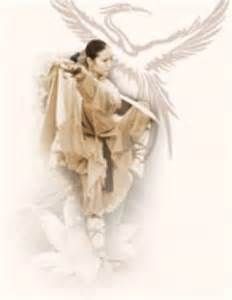 When westerners think of Chinese martial arts, the term kung fu generally comes to mind. The word kung fu is a compound of (gōng) meaning work and (fū) merit, and refers to any skill that is acquired through learning or practice. Kung fu is often misunderstood by outsiders to be a single fighting style. In reality, it is made of several hundred styles or schools, and legend has it one of them was founded by a woman.
When westerners think of Chinese martial arts, the term kung fu generally comes to mind. The word kung fu is a compound of (gōng) meaning work and (fū) merit, and refers to any skill that is acquired through learning or practice. Kung fu is often misunderstood by outsiders to be a single fighting style. In reality, it is made of several hundred styles or schools, and legend has it one of them was founded by a woman.Ng Mui was born in a noble household in China in the seventeenth century and her life is a mixture of fact and legend. In some stories she is the daughter of a general in the Ming imperial court, in others a princess, but because of wealth and family influence, she had access to an extensive education and the best kung fu teachers of the time. In her younger years, Ng Mui mastered several Shaolin martial arts and even developed a new training regimen on upturned logs to develop balance and leg strength, a practice she later incorporated into her own fighting style.
Her transformation into a warrior woman began in a bloody coup. The Manchus defeated the Ming dynasty and took over the rule of China. Ng Mui parents, fervent supporters of the Ming, were killed. Fortunately, she was away from home when the purge started. She escaped to Kwangsi Province and took refuge in the White Crane Temple. Due to the Shaolin’s support for the Ming, the monks and nuns faced great danger, so had to remain on alert for attacks.
 Ng Mui became a Buddhist nun. Although highly proficient in the existing styles of kung fu, she felt it was possible to devise a more effective fighting method which didn’t rely on brute strength or require years to master. Her story has several versions, but the one I like says one day, she watched a fight between a stork and a snake. The stork used its wings and legs to deflect and counter-attack at the same time. Inspiration struck Ng Mui. She adapted the technique to create a unique new martial art that emphasized a delicate but natural self-defense style and transcended size, weight and gender. The movements required little force to block and could strike effectively and efficiently.
Ng Mui became a Buddhist nun. Although highly proficient in the existing styles of kung fu, she felt it was possible to devise a more effective fighting method which didn’t rely on brute strength or require years to master. Her story has several versions, but the one I like says one day, she watched a fight between a stork and a snake. The stork used its wings and legs to deflect and counter-attack at the same time. Inspiration struck Ng Mui. She adapted the technique to create a unique new martial art that emphasized a delicate but natural self-defense style and transcended size, weight and gender. The movements required little force to block and could strike effectively and efficiently.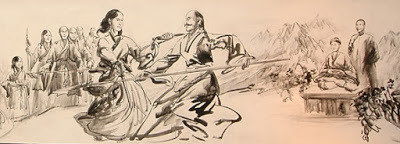 At first, her new technique had no name. Then Ng Mui met a beautiful young girl named Yim Wing Chun. Her fiancé was away fighting with a rebel force and a bandit warlord tried to force her into marriage. She refused and he threatened her and her family. Yim Wing Chun feared she’d have to yield to his desires, but Ng Mui convinced the girl to give her six months for training. By the end of six months she mastered the new the art of self-defense and then challenged the warlord to combat. She defeated him. Her fiancé returned and was impressed with her new skill. She bested him, too, and he begged her to teach him the fighting style. He named it Wing Chun in her honor. It translates as “everlasting springtime” which sounds pretty soft for one tough cookie.
At first, her new technique had no name. Then Ng Mui met a beautiful young girl named Yim Wing Chun. Her fiancé was away fighting with a rebel force and a bandit warlord tried to force her into marriage. She refused and he threatened her and her family. Yim Wing Chun feared she’d have to yield to his desires, but Ng Mui convinced the girl to give her six months for training. By the end of six months she mastered the new the art of self-defense and then challenged the warlord to combat. She defeated him. Her fiancé returned and was impressed with her new skill. She bested him, too, and he begged her to teach him the fighting style. He named it Wing Chun in her honor. It translates as “everlasting springtime” which sounds pretty soft for one tough cookie. Ng Mui became one of the Five Elders of the Shaolin Temple, the most respected marital artists of the 1700s. Because of the Shaolins’ support of the previous Ming dynasty, the Manchu eventually attacked and destroyed the temple. The elders escaped and scattered in different directions. Ng Mui and her followers supposedly went into hiding in the Himalayan foothills where she became part of a rebel force and continued to teach kung fu.
Ng Mui became one of the Five Elders of the Shaolin Temple, the most respected marital artists of the 1700s. Because of the Shaolins’ support of the previous Ming dynasty, the Manchu eventually attacked and destroyed the temple. The elders escaped and scattered in different directions. Ng Mui and her followers supposedly went into hiding in the Himalayan foothills where she became part of a rebel force and continued to teach kung fu.Wing Chun was reintroduced in the twentieth century by Grandmaster Ip Man, regarded as the greatest and most insightful teacher of Wing Chun. He moved to Hong Kong in 1948 and became the first master to teach the fighting style to the general public and spread the popularity of Wing Chun around the world today.

Published on July 27, 2018 00:30
June 27, 2018
The Medieval Fair: The Amazon of the Dark Ages
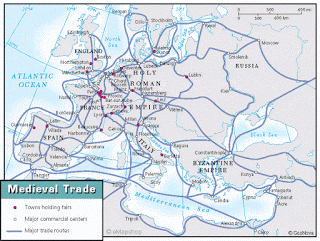 People tend to think of the Middle Ages as a time of contention; city states and petty kingdoms constantly at war as rulers jockeyed for power. Despite fluctuating borders, people still need stuff and commerce was alive and well. At the medieval fair, buying and selling took place on a grand scale. The fair at Champagne was famous early on, but Britain, Germany, and other countries were equally well-attended.
People tend to think of the Middle Ages as a time of contention; city states and petty kingdoms constantly at war as rulers jockeyed for power. Despite fluctuating borders, people still need stuff and commerce was alive and well. At the medieval fair, buying and selling took place on a grand scale. The fair at Champagne was famous early on, but Britain, Germany, and other countries were equally well-attended. Most fairs had origins as religious festivals. Crowds of pilgrims naturally gathered to pay homage to a particular saint and understandably might want a little nosh afterwards. Astute merchants and vendors saw a golden opportunity and jumped right in. The first rule of marketing: get your product out in front of buyers, and it helps if you have God spread the word. The Cathedral of Notre Dame in Paris secured a fragment of the true cross in 1109 and became the center of a yearly June pilgrimage. It didn’t take long for booths to be set up between the areas of Montmartre and St. Denis. The fair became known as Lendit from the French word l’endit or assembly. The bishops had no objection as it brought more of the faithful to the cathedral.
Most fairs had origins as religious festivals. Crowds of pilgrims naturally gathered to pay homage to a particular saint and understandably might want a little nosh afterwards. Astute merchants and vendors saw a golden opportunity and jumped right in. The first rule of marketing: get your product out in front of buyers, and it helps if you have God spread the word. The Cathedral of Notre Dame in Paris secured a fragment of the true cross in 1109 and became the center of a yearly June pilgrimage. It didn’t take long for booths to be set up between the areas of Montmartre and St. Denis. The fair became known as Lendit from the French word l’endit or assembly. The bishops had no objection as it brought more of the faithful to the cathedral. Fairs weren’t only established around cathedrals; other buildings did nicely. Some were even founded by religious orders. One of the largest was established in 1036 by the Abbey of St. Vaast at Arras in Germany. Clerics discovered not only the advantages of having goods and services for sale close at hand, but also the joy of taxes. Pheasants, meanwhile, discovered the joy of discovering loopholes in revenue laws. They staggered into Arras weighed down by bundles of goods on their backs because merchandise arriving on foot wasn’t taxed. Can’t carry all those pigs to market in a sack? Make sure to use a cart with an unshod horse. Shod horses were taxed at two deniers apiece.
Fairs weren’t only established around cathedrals; other buildings did nicely. Some were even founded by religious orders. One of the largest was established in 1036 by the Abbey of St. Vaast at Arras in Germany. Clerics discovered not only the advantages of having goods and services for sale close at hand, but also the joy of taxes. Pheasants, meanwhile, discovered the joy of discovering loopholes in revenue laws. They staggered into Arras weighed down by bundles of goods on their backs because merchandise arriving on foot wasn’t taxed. Can’t carry all those pigs to market in a sack? Make sure to use a cart with an unshod horse. Shod horses were taxed at two deniers apiece.As years pas and the popularity of fairs spread, temporary structures and itinerant merchants were replaced by fixed stalls and benches. The spread of commerce brought more money into circulation and merchants began to construct small shops, often with storerooms behind and living quarters above. It wasn’t uncommon for similar merchants to concentrate in a particular area; one street would be devoted to butchers, another to spice merchants, others to trades such as cloth, leather goods, or metalworking.
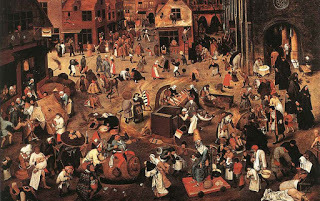 So what could you buy at one of these fairs? Everything your little medieval life needed. Fishmongers sold sturgeon, salmon, and salted herring, but if you lived at the coast you might wander down to your favorite stall and see if they had any fresh whale meat today. Food preservation was generally restricted to brining, salting, smoking, or drying so the fruits and vegetables were sold by the growing seasons. Cattle and pigs tended to be butchered in the fall after summer fattening, but chickens and eggs might be available year round. Honey, salt, oil, cheeses and a variety of wine and beer were also common purchases. Need to cook your foods? Visit the smithy who can hammer out some pots and pans. Planning to get married? Some stands carried specialty items such as delicate lace or fine embroidery. There was no such thing as off the rack shoes, everything was to order so pick out your cowhide from the cobbler and have him rustle up a nice pair of boots or use that new embroidered cloth for a fancy pair of slippers.
So what could you buy at one of these fairs? Everything your little medieval life needed. Fishmongers sold sturgeon, salmon, and salted herring, but if you lived at the coast you might wander down to your favorite stall and see if they had any fresh whale meat today. Food preservation was generally restricted to brining, salting, smoking, or drying so the fruits and vegetables were sold by the growing seasons. Cattle and pigs tended to be butchered in the fall after summer fattening, but chickens and eggs might be available year round. Honey, salt, oil, cheeses and a variety of wine and beer were also common purchases. Need to cook your foods? Visit the smithy who can hammer out some pots and pans. Planning to get married? Some stands carried specialty items such as delicate lace or fine embroidery. There was no such thing as off the rack shoes, everything was to order so pick out your cowhide from the cobbler and have him rustle up a nice pair of boots or use that new embroidered cloth for a fancy pair of slippers. As the Middle Ages progressed, trade became increasing professional. Early merchants were from the lower class and used commerce to rise above the status of downtrodden peasant. Markets and trade expanded and so did the middle class. They grew not only in size, but also in economic power and began to demand more rights. Royalty wasn’t happy, but they were also dependent on trade and the taxes it brought to support their regimes. Eventually, the power of the monarchies slipped. And you thought civil war was necessary to bring about democracy. Nope, it only required shopping.
As the Middle Ages progressed, trade became increasing professional. Early merchants were from the lower class and used commerce to rise above the status of downtrodden peasant. Markets and trade expanded and so did the middle class. They grew not only in size, but also in economic power and began to demand more rights. Royalty wasn’t happy, but they were also dependent on trade and the taxes it brought to support their regimes. Eventually, the power of the monarchies slipped. And you thought civil war was necessary to bring about democracy. Nope, it only required shopping.
Published on June 27, 2018 00:30
May 27, 2018
What is an ISBN and does a self-published author need one?
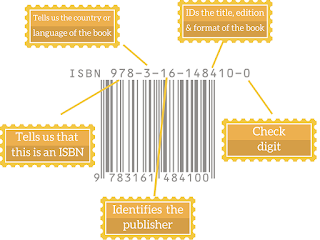 What is an ISBN?
ISBN stands for International Standard Book Number. It has 13 digits and consists of 5 sections separated by spaces or hyphens. The first group is the prefix element. It is either 978 or 979. Next is the registration group. It’s between 1 and 5 digits and identifies the country, geographic region, or language. The third is the registrant, up to 7 digits and identifies the publisher or imprints. The publication element is fourth. It has up to 6 digits and identifies the particular edition and format of a specific title. The last is the single check digit. It’s used in some fancy-schmancy mathematical formula you and I can’t care less about and validates the ISBN.
What is an ISBN?
ISBN stands for International Standard Book Number. It has 13 digits and consists of 5 sections separated by spaces or hyphens. The first group is the prefix element. It is either 978 or 979. Next is the registration group. It’s between 1 and 5 digits and identifies the country, geographic region, or language. The third is the registrant, up to 7 digits and identifies the publisher or imprints. The publication element is fourth. It has up to 6 digits and identifies the particular edition and format of a specific title. The last is the single check digit. It’s used in some fancy-schmancy mathematical formula you and I can’t care less about and validates the ISBN.Now that I know what it is, what the heck is an ISBN used for? An ISBN is a product identifier. That’s it. The number is assigned to publications and used by publishers, booksellers, libraries, internet retailers and others to order, record sales, or manage stock. The ISBN identifies the registrant as well as the specific title, edition, and format. ISBNs are assigned to single publications such as books, but not to serial publications such as journals or newspapers. Any book made publicly available, for sale or free, can be identified by an ISBN, but so can individual chapters of books or articles from journals and periodicals. An ebook doesn’t require an ISBN, but a publisher can attach one, if desired. However, each format (e.g. paperback, hardcover, EPUB, .pdf) requires a separate number, so if you choose to assign an ISBN to an ebook, it must have a different number than the paperback version.
 What does that have to do with the copyright?
Nada, zilch, zippo. The ISBN is an identifier. Simply having an ISBN on a book doesn’t convey any legal or copyright protection. Nor does it take any away from the author. The ISBN only identifies the publisher of a particular edition. In effect, the person or company who ponied up for the ISBN.
What does that have to do with the copyright?
Nada, zilch, zippo. The ISBN is an identifier. Simply having an ISBN on a book doesn’t convey any legal or copyright protection. Nor does it take any away from the author. The ISBN only identifies the publisher of a particular edition. In effect, the person or company who ponied up for the ISBN.How do you get an ISBN? You have to buy it and they’re not cheap. The only authorized representative in the United States to sell ISBNs is a company called Bowker. ISBNS are $125 for a single ISBN, but they have reduced rates if you buy in bulk.
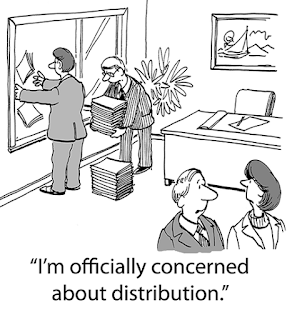 Does a self-published author need an ISBN?
Maybe. Maybe not. If you only plan to publish an ebook then an ISBN isn’t necessary. Paperbacks or hardcovers are different stories. Companies such as CreateSpace will give you an ISBN for free if you publish with them. Again, this has nothing to do with copyright. The number will only identify the publisher as CreateSpace, and you will still be the author and retain all rights.
Does a self-published author need an ISBN?
Maybe. Maybe not. If you only plan to publish an ebook then an ISBN isn’t necessary. Paperbacks or hardcovers are different stories. Companies such as CreateSpace will give you an ISBN for free if you publish with them. Again, this has nothing to do with copyright. The number will only identify the publisher as CreateSpace, and you will still be the author and retain all rights.If you plan to market mostly ebooks and only sell hard or softcovers through a website or conventions then this is a good cheap way to go. However, you can pretty much forget about bookstores. Most are loathe to take on self-published authors anyway, but a CreateSpace ISBN is the kiss of death. First of all, it’s an Amazon company and indy bookstores don’t want to throw any more money at the Big A. The biggest reason is that companies like CreateSpace don’t have a buy-back option for booksellers, so a retailer can’t return unsold books. Indy bookstores aren’t particularly welcoming to self-published authors, but you may be able to talk a few into carrying your book if you have an ISBN from a company that offers buy-backs, so they’re not out any money if your book doesn’t sell. This means becoming your own publisher. Don’t worry, you don’t need to invest in typesetting equipment. Simply buy an ISBN and use a company that offers buy-back, such as IngramSpark. It won’t guarantee sales, of course, but may put you one step closer. Good luck.
Published on May 27, 2018 00:30
April 27, 2018
Write your Way out of a Corner with W5
 You’re cruising along nicely, enjoying the literary scenery; characters jell, plots flow smoothly, descriptions create the mood of the proper time and place. Suddenly, and for no apparent reason, you swerve. Ideas fall part and that engrossing manuscript that flowed along so neatly is now one hot mess. Don’t throw out your fictional baby with the literary bathwater. You’ve only reached a snag on the road to publication. Sometimes coming to a dead stop is necessary to get thoughts in order. In general, weakness occur in the two places; character or plot issues. One method to get back on track is called the W5. It asks basic questions about character and plot and can help guide your thoughts.
You’re cruising along nicely, enjoying the literary scenery; characters jell, plots flow smoothly, descriptions create the mood of the proper time and place. Suddenly, and for no apparent reason, you swerve. Ideas fall part and that engrossing manuscript that flowed along so neatly is now one hot mess. Don’t throw out your fictional baby with the literary bathwater. You’ve only reached a snag on the road to publication. Sometimes coming to a dead stop is necessary to get thoughts in order. In general, weakness occur in the two places; character or plot issues. One method to get back on track is called the W5. It asks basic questions about character and plot and can help guide your thoughts.Character Issues
Who If you want to round out your hero or heroine (H/H) consider how they interact with others. Who is directly affected by their actions? Only the H/H? What about friends? Family Members? Are they really important to the story or just window dressing? If they don’t advance the plot, what good are they? Too many clutter a plot and slow down the action. Secondary characters should have a specific purpose (so should the H/H.) If Joe the Coffee Shop guy’s only function is to give the heroine her cup of coffee in the morning than delete Joe the Coffee Shop guy and have her brew her own.
Are you clear on the strengths and weakness of the H/H? Every human has both, and both should appear somewhere in the story or else you have a caricature and not a person. How do these strength or weaknesses help the H/H agenda and move the plot along. How do they hinder?Who makes the decisions in the story? If one character is always leading, then the others are probably too weak and ineffective.
Where? Where is the most tension between the main characters? Is it a personality conflict or conflict of ideals? How can they be resolved? Should one convince the other or is a combination of both the best pathway to success. Can the H/H get help from others? Do these characters have an alternate function or are they only there to feed information to the H/H? If so, they may not be important and the information they distribute can be found in another way.
Plot Issues
 What?
What is both the best and worst case scenario for this story? Think of at least three steps necessary for your H/H to achieve. What is the least and most important one of them? In most stories, the objective is obvious, but if your plot feels a little lackluster consider one alternative or a hidden agenda. This is the way people act in real life. They aren’t ruled by single motives alone.
What?
What is both the best and worst case scenario for this story? Think of at least three steps necessary for your H/H to achieve. What is the least and most important one of them? In most stories, the objective is obvious, but if your plot feels a little lackluster consider one alternative or a hidden agenda. This is the way people act in real life. They aren’t ruled by single motives alone.When? Is the action well-paced? Will a reader feel rising tension beginning with the first chapter and have a satisfying letdown at the end? Novels don’t have one climatic point, but a series of smaller ones, some more important than others. They lead up to the denouement or final resolution. Does the H/H take action at the right time? A writer can’t keep a reader on an emotional high throughout an entire novel. There has to be some downtime, too, to flesh out the story. Lastly, when will the H/H know they succeeded? Will it be at the denouement or shortly thereafter with a final resolution?
Why? Have you considered the why of this story? Why must it be told? (“To score a publishing contract” is not the right answer.) The story should be told because it’s enjoyable or enlightening. Have you conveyed to the reader sympathy for the characters so that they care about the resolution? What about the characters? Are the reasons for their actions clear? Are obstacles placed in the path of the story’s resolution or are you merely throwing barriers in the H/H’s way to make the story longer. Each barrier should have a logical reason behind it and a different resolution.
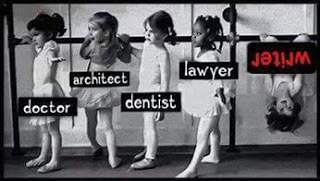 Now you’re back on track. Put on that writing cap and get to work. The story awaits.
Now you’re back on track. Put on that writing cap and get to work. The story awaits.
Published on April 27, 2018 00:30
March 30, 2018
The Suicide Song, Big Easy Shaman Book 3, is available for pre-order
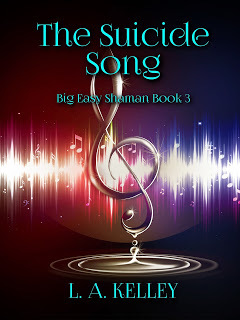 The Suicide SongThe Suicide Song, Big Easy Shaman Book 3, is now available for pre-order on Amazon.
The Suicide SongThe Suicide Song, Big Easy Shaman Book 3, is now available for pre-order on Amazon.
Once you hear the Suicide Song, it’s too late to run.
There’s more trouble in the Big Easy for budding shaman Peter Whistler and his friends. The Book of the Practically Undead is proving difficult to destroy. Meanwhile, someone mastered the Suicide Song, a particularly nasty bit of dark magic. Once a victim is trapped by the singer’s deadly tune, death by suicide is the only escape. Could this new conjuror also have something to do with a lovesick fifolet causing trouble in Bayou St. Gerard? Peter’s own love life could certainly use assistance. How can he concentrate on the upcoming Père Noël dance when danger lurks around every corner? Fifolets, pirate curses, and deadly threats to New Orleans. Will Peter and his friends prevail and stop the Suicide Song before the conjuror claims the next victim?
Published on March 30, 2018 06:05
March 27, 2018
Don't Stop With a Cop: Unusual Law Enforcement Agencies to Write About
A common occupation for either a hero or heroine in an action novel is law enforcement officer. The profession makes sense. When dealing with the evil aspects of the paranormal, a person needs steely nerves and ready access to firearms. By why stop with a cop when other agencies might do nicely?
 NYPD Intelligence Bureau
Did you know an arm of the NYPD is an international intelligence organization? The mission of the NYPD Intelligence Bureau is to detect and disrupt criminal and terrorist activity. Officers and civilian analysts in the Intelligence Bureau collect and analyze data from a variety of sources here and abroad in the pursuit of criminal and terrorist organizations. The Bureau consists of two divisions; the Intelligence Operations and Analysis Section (IOAS) and the Criminal Intelligence Section (CIS).
NYPD Intelligence Bureau
Did you know an arm of the NYPD is an international intelligence organization? The mission of the NYPD Intelligence Bureau is to detect and disrupt criminal and terrorist activity. Officers and civilian analysts in the Intelligence Bureau collect and analyze data from a variety of sources here and abroad in the pursuit of criminal and terrorist organizations. The Bureau consists of two divisions; the Intelligence Operations and Analysis Section (IOAS) and the Criminal Intelligence Section (CIS).The objective of IOAS is to thwart potential terrorist plots. The sector uses investigators and civilian analysts to collect and analyze information about individuals or groups engaged in unlawful activity. CIS has a similar function, but concentrates on the criminal realm. A critical component of CIS is the Field Intelligence Officer (FIO) program. FIOs are ranking uniformed officers deployed to each NYPD precinct, where they collect and disseminate criminal intelligence information to support narcotics, firearms and other criminal investigations, ranging from simple short-term cases to complex long-term ones.
While members of the Intelligence Bureau in New York City work closely with federal, state, and local law enforcement, through its International Liaison Program officers are posted in law enforcement agencies around the world. These officers support the NYPD by providing intelligence and working with local police. Nothing is said about hunting down demons that roam the sewers and pose a threat to the good folk of New York City, but one can only hope.
 INTERPOL
Need an overseas agent provocateur to handle those pesky gremlins, banshees, rakshasha, and strigoi? Don’t bother looking for a dashing Interpol agent. There aren’t any. INTERPOL’s mission it to train, offer investigative support, collect data and provide communications channels among cooperating law enforcement agencies. INTERPOL also analyzes crime trends and facilitates international police cooperation even where diplomatic relations don’t exist between countries. In other words, no hunky experts in daring-do, just office drones. Agents don't even carry guns. (Although nothing is said on their website about stakes or silver bullets.) It’s more useful to think of INTERPOL as a bulletin board where national police forces around the world post wanted notices and requests for information. Some nations have decided to give these requests binding legal force, but the United States isn’t one of them.
INTERPOL
Need an overseas agent provocateur to handle those pesky gremlins, banshees, rakshasha, and strigoi? Don’t bother looking for a dashing Interpol agent. There aren’t any. INTERPOL’s mission it to train, offer investigative support, collect data and provide communications channels among cooperating law enforcement agencies. INTERPOL also analyzes crime trends and facilitates international police cooperation even where diplomatic relations don’t exist between countries. In other words, no hunky experts in daring-do, just office drones. Agents don't even carry guns. (Although nothing is said on their website about stakes or silver bullets.) It’s more useful to think of INTERPOL as a bulletin board where national police forces around the world post wanted notices and requests for information. Some nations have decided to give these requests binding legal force, but the United States isn’t one of them.All INTERPOL member countries are connected through a secure communications system known as I-24/7. This gives police real-time access to criminal databases containing millions of records and can alert member countries to fugitives, dangerous criminals, missing persons, or weapons threats. Unfortunately, instead of hunting supernatural menaces through the sewers of Paris, an Interpol is agent is more likely to conduct an online learning course in investigative techniques or an administrative management program for senior police staff.
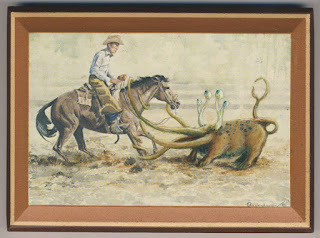 Texas Rangers
The Texas Ranger Division is the primary criminal investigative branch of the Texas Department of Public Safety. Most functions are common among law enforcement agencies. Rangers investigate murder, robbery, sexual assault, burglary, theft, fraud, threats against state and federal officials, and missing persons.
Texas Rangers
The Texas Ranger Division is the primary criminal investigative branch of the Texas Department of Public Safety. Most functions are common among law enforcement agencies. Rangers investigate murder, robbery, sexual assault, burglary, theft, fraud, threats against state and federal officials, and missing persons.Unlike standard police forces in the rest of the country though, Texas Rangers also have special duties involving border control. The Ranger Reconnaissance Team is a highly trained tactical force and their primary responsibility is to carry out missions along the Texas-Mexico border region. They conduct overt and covert operations in remote areas where conventional law enforcement can’t operate. The focus is to gather intelligence and disrupt criminal activity usually associated with drug cartels. According to the official
 website, one of their duties is to “conduct interdiction” which, if you know what the word “interdiction” means, doesn’t make a whole lot of sense. I prefer to read between the lines and like to think they really mean “benedictions” before pursuing supernatural creatures. Although, the website is sketchy on this subject too, so chupacabras may still run free in the Big Bend National Park. It’s a nice thought.
website, one of their duties is to “conduct interdiction” which, if you know what the word “interdiction” means, doesn’t make a whole lot of sense. I prefer to read between the lines and like to think they really mean “benedictions” before pursuing supernatural creatures. Although, the website is sketchy on this subject too, so chupacabras may still run free in the Big Bend National Park. It’s a nice thought.
Published on March 27, 2018 00:30
February 27, 2018
Is is Hot in Here or is it Me? The Science of Lust, Attraction, and Attachment
 Now that Valentine’s Day has come and gone it’s time to reflect on what you learned about romance this year. Absolutely nothing, you say. Well, here’s a news flash: love is all in the chemicals.
Now that Valentine’s Day has come and gone it’s time to reflect on what you learned about romance this year. Absolutely nothing, you say. Well, here’s a news flash: love is all in the chemicals.Some of us read about romance. Others find it a fascinating study. A team of scientists led by Dr. Helen Fisher at Rutgers University has determined love has three categories: lust, attraction, and attachment. Each is characterized by its own set of hormones. Testosterone and estrogen drive lust; dopamine, norepinephrine, and serotonin create attraction; and oxytocin and vasopressin are linked to attachment.
 Lust
There are big differences between the three categories and how they relate to a person’s emotional state of mind. The nasty slobbering sex hormones of testosterone and estrogen drive lust. They are revved and raring for sexual contact and reproduction. While lust is exclusive to romantic entanglements, it doesn’t care about the future, picking out curtains together, or wedding bells. Lust wants her jollies now. Lust is explosive and short term, but with the right mental attitude and hormonal boost can morph into long-term attachment, and this isn’t only found in humans. Let’s give it up for our friends, the prairie vole. Prairie voles indulge in far more sex than is strictly necessary for the purposes of reproduction. (Life is good for prairie voles.) Biologists have determined in their society sex is the prelude to long-term male/female pair bonding. In an experiment, male prairie voles were given a drug to suppress hormonal effect. The bond with their partner deteriorated immediately. They lost their devotion and failed to fend off their partner’s new suitors. Couples counselling had no effect.
Lust
There are big differences between the three categories and how they relate to a person’s emotional state of mind. The nasty slobbering sex hormones of testosterone and estrogen drive lust. They are revved and raring for sexual contact and reproduction. While lust is exclusive to romantic entanglements, it doesn’t care about the future, picking out curtains together, or wedding bells. Lust wants her jollies now. Lust is explosive and short term, but with the right mental attitude and hormonal boost can morph into long-term attachment, and this isn’t only found in humans. Let’s give it up for our friends, the prairie vole. Prairie voles indulge in far more sex than is strictly necessary for the purposes of reproduction. (Life is good for prairie voles.) Biologists have determined in their society sex is the prelude to long-term male/female pair bonding. In an experiment, male prairie voles were given a drug to suppress hormonal effect. The bond with their partner deteriorated immediately. They lost their devotion and failed to fend off their partner’s new suitors. Couples counselling had no effect.

Attraction While attraction and lust often co-mingle, it is possible to have one without the other. Attraction kicks off in the brain pathways that control reward behavior and releases dopamine, norepinephrine, and serotonin. They stimulate pleasure centers during enjoyable moments such as time with loved ones or sexual encounters. Hormones reinforce the desire to keep the fires burning. The first few weeks or months of a relationship are exhilarating or even all-consuming. Feelings of giddiness, excess energy, and euphoria, lead to a decrease in appetite and even insomnia. Thanks to brain chemistry, the feeling of being in love can be so overpowering a person can’t eat or sleep. Kind of like a bad stomach virus.
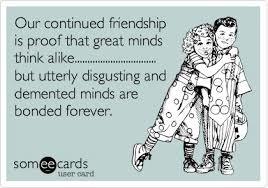 Attachment
Attachment commitment focuses on relationship building, both long and short-term. Long-term are powerful such as in parent-infant bonding, sibling relationships, and close friendships. Short-term govern behavior in social situations like the workplace. Oxytocin, nicknamed the cuddle hormone, plays a big role in attachment. It’s released during bonding events such as sex, breastfeeding, and childbirth, and also reinforces positive feelings we already have toward people we love. As attachments to families, friends, and loved ones grows, the flow of oxytocin continues increasing our affection. While this is a good thing for monogamy, such associations may have a downside. Oxytocin is thought to play a role in ethnocentrism, increasing our love for people in cultural groups and making those unlike us seem threatening. Oxytocin—the closet bigot.
Attachment
Attachment commitment focuses on relationship building, both long and short-term. Long-term are powerful such as in parent-infant bonding, sibling relationships, and close friendships. Short-term govern behavior in social situations like the workplace. Oxytocin, nicknamed the cuddle hormone, plays a big role in attachment. It’s released during bonding events such as sex, breastfeeding, and childbirth, and also reinforces positive feelings we already have toward people we love. As attachments to families, friends, and loved ones grows, the flow of oxytocin continues increasing our affection. While this is a good thing for monogamy, such associations may have a downside. Oxytocin is thought to play a role in ethnocentrism, increasing our love for people in cultural groups and making those unlike us seem threatening. Oxytocin—the closet bigot.Why does the brain need a separation between the three brain states with different chemicals for each? Scientists determined that while they all contribute to well-balanced mental health, so does maintaining a boundary. Without it, there can be a nasty emotional spillover. Who wants to feel attraction (yuck) or lust (double yuck) instead of attachment to family members?
 What does all this blather mean to your love life?
What does all this blather mean to your love life?
So how do we handle our hormones so that a relationship lasts? First, don’t mistake lust for love. Lust is shorter, so give a new relationship time to develop. Keep the dopamine flowing. Relationships have a better chance of becoming long-term when couples pursue intimate moments that aren’t just sexual. Shared activities such as movie nights, dancing, trying new activities or restaurants all increase feelings of intimacy. A hug or kiss, simply talking about shared hopes and future dreams or offering support to your partner can stimulate a powerful hormonal rush. Want to hear what the scientists have to say? Check out TED talks on the weird science of love. https://www.ted.com/playlists/231/the_weird_science_of_love
Published on February 27, 2018 00:30
February 5, 2018
Book Spotlight: Love is Lovelier by Donna Simonetta
 Love is Lovelier
Rivers Bend Trilogy Book 2
Love is Lovelier
Rivers Bend Trilogy Book 2
Heather and Mick have a long history together, and Heather wants to leave it in the past where it belongs. Yet, here Mick is, very much in her present, thanks to her brother Jeff, who hired Mick to be her boss at the Retreat at Rivers Bend.
It wouldn’t be so bad, except Heather and Mick are still attracted to each other like metal to a magnet. Oh, and her brother is considering offering Mick a partnership in the Retreat, which by rights should be hers. And even if they act on their attraction, Heather is a small-town, country girl, and proud of it, whereas Mick can’t get far enough from his West Virginia coal-mining roots.[image error]
Will they be able to get a second chance at their first love and find their happy ending together in Rivers Bend?
Excerpt “Stick close. I’ll get you out of here.”He used his broad shoulders as a wedge to propel himself though the crowd; Heather scurried to keep up with him so she could take advantage of the gap he created, not wanting to be so close that she could feel the warmth of his body through his elegant suit, but because she needed somehow to beat this crush of people to the Retreat to make sure that everything was in place for the post-christening party she’d planned for Bethanne – only perfection would do for her BFF.She watched Mick’s back as she stuck close to him; he looked so strong and fit – it was hard to imagine him the way he was ten years ago, when he’d suffered his NFL career-ending injury, but the same business acumen that kept him with the Portland Pintos organization back then was the reason Jeff and Cisco hired him at the Retreat.
He’d be good for business – she’d just have to keep chanting those words in her head like a mantra, or else she’d do one of two things she’d regret – kill Mick, or kiss him, and she’d gone the kissing route with him before. It did not end well. And tempting as the killing option was at the moment, it probably wouldn’t end any better.
Buy Links Amazon
Barnes & Noble
The Wild Rose Press
Amazon UK
 Author Bio
My career has been a winding road. I worked in the business world for years, got my MLS and worked in a school library, and am now living my dream as an author. I love to read and write contemporary and fantasy romance. I live in Maryland, with my husband, who is my real-life romance hero. We both enjoy traveling to visit our far-flung family and friends, and spending time on the beach with an umbrella drink and a good book.
Author Bio
My career has been a winding road. I worked in the business world for years, got my MLS and worked in a school library, and am now living my dream as an author. I love to read and write contemporary and fantasy romance. I live in Maryland, with my husband, who is my real-life romance hero. We both enjoy traveling to visit our far-flung family and friends, and spending time on the beach with an umbrella drink and a good book.
Author Links https://www.facebook.com/donnasimonettaauthor
https://twitter.com/donna_simonetta
https://www.goodreads.com/author/show/15422407.Donna_Simonetta
https://www.amazon.com/Donna-Simonetta/e/B06X415TWW/
https://www.bookbub.com/authors/donna-simonetta
Published on February 05, 2018 00:30
January 27, 2018
What's in a Name?
One of the pleasures of writing is the ability to draft a new world from scratch. You not only have god-like power to create characters, but baptize them as well. However, as every potential parent will tell you, choosing a name for their little darling isn’t as easy as it seems. Often names have cultural, religious, or ethnic significance. Many ancient societies had religious or magical naming rites. Modern Catholicism has Confirmation. A child selects a saint’s name in the belief the saint will guide moral choices. Names can also have a particular order depending on cultural conventions. In China, the surname or xing is first and usually, but not always, monosyllabic. The personal name or ming follows and is nearly always one syllable. Spanish naming custom draw from both sides of a child’s family. The given name is followed by two surnames; the first is from the father and the last from the mother.
In Native American cultures a name is often tied to nature and the actual naming ceremony may be guided by an elder or tribal shaman. Names may not be static, but change through a lifetime. In the Mohegan tribe in upper Connecticut, the first name a child receives is descriptive, but during adolescence, a new name may be given that better reflects life experiences. It may change again in adulthood.
To some extent, the custom continues with nicknames. Spouses may call each other Honey or Sweetheart. A nickname dubbed in childhood can be shed as an adult or a new one adopted. Nicknames can be benign and used to describe physical characteristics, such as Lefty or Slim or have a darker purpose. Mobsters get nicknames, sometimes by law enforcement, but also from each other. A mob nickname sets an individual apart and often describes an anti-social attribute. Joe Bonnano was referred to as Joe Bananas, not because he liked the fruit, but because he was crazy. Benjamin Siegel hated the nickname, Bugsy, which referred to his less than placid nature and explosive temper. Nobody, but nobody called him Bugsy to his face unless they wanted to be fitted for concrete overshoes.
In modern America anything goes. You can dub a kid Fruit Stand if you want and no one will squawk. (I’ve heard stupider baby names from Hollywood.) If you want to break the rules though, it’s nice to know what they are first. For instance, western society dictates a diminutive boy’s name will end in ‘y’ rather than the feminine ‘i’ or ‘ie’. Nicky is masculine, Nicki or Nickie is feminine and looks weird attached to a boy. Generally, girls’ names end with an ‘a’, but boys don’t. If two characters in a story are named Will and Willa, one is obviously a girl and the other a boy. However, a different ethnic background changes the rules. In Eastern Europe, some male names such as Bela or Luca end in “a”.
A boy’s name can be given to a girl, but not the other way around without sounding wrong. Once a boy’s name is fully adopted by girls, it never goes back to being a boy’s name again. Originally, Stacy, Leslie, and Tracy were boys’ name. They have since faded from little blue baby books. Ashley Wilkes from Gone with the Wind was all man and never swapped girl talk with Scarlet O’Hara. More recently, Morgan and Taylor both started as manly men. The popularity of the names soared for girls, and consequently plummeted for boys. A few years from now, any contemporary story describing studly Morgan and his facial scruff, may bring giggles.
In historic fiction, the name needs to fit the era. Nobody, but nobody, christened their daughter Madison until the popularity of the movie Splash in 1984. Five years later there was an explosion of little Madisons in kindergarten. Find that name attached to the heroine of a novel set in 1875 Boston and the first thing that pops to mind is the writer ignored simple research. Lists of names for particular time periods are found easily on the Internet. The Social Security Administration has a fun site where you can check past name popularity. (If you still want to give your (fictional or real) pride and joy something trendy, remember it doesn’t take long to sound dated, stale, or downright silly. Minnie and Clarence were popular choices in the 1880s, but where are they today? So choose a name you can live with for the next fifty years and best of luck to you with little Fruit Stand.
In Native American cultures a name is often tied to nature and the actual naming ceremony may be guided by an elder or tribal shaman. Names may not be static, but change through a lifetime. In the Mohegan tribe in upper Connecticut, the first name a child receives is descriptive, but during adolescence, a new name may be given that better reflects life experiences. It may change again in adulthood.
To some extent, the custom continues with nicknames. Spouses may call each other Honey or Sweetheart. A nickname dubbed in childhood can be shed as an adult or a new one adopted. Nicknames can be benign and used to describe physical characteristics, such as Lefty or Slim or have a darker purpose. Mobsters get nicknames, sometimes by law enforcement, but also from each other. A mob nickname sets an individual apart and often describes an anti-social attribute. Joe Bonnano was referred to as Joe Bananas, not because he liked the fruit, but because he was crazy. Benjamin Siegel hated the nickname, Bugsy, which referred to his less than placid nature and explosive temper. Nobody, but nobody called him Bugsy to his face unless they wanted to be fitted for concrete overshoes.
In modern America anything goes. You can dub a kid Fruit Stand if you want and no one will squawk. (I’ve heard stupider baby names from Hollywood.) If you want to break the rules though, it’s nice to know what they are first. For instance, western society dictates a diminutive boy’s name will end in ‘y’ rather than the feminine ‘i’ or ‘ie’. Nicky is masculine, Nicki or Nickie is feminine and looks weird attached to a boy. Generally, girls’ names end with an ‘a’, but boys don’t. If two characters in a story are named Will and Willa, one is obviously a girl and the other a boy. However, a different ethnic background changes the rules. In Eastern Europe, some male names such as Bela or Luca end in “a”.
A boy’s name can be given to a girl, but not the other way around without sounding wrong. Once a boy’s name is fully adopted by girls, it never goes back to being a boy’s name again. Originally, Stacy, Leslie, and Tracy were boys’ name. They have since faded from little blue baby books. Ashley Wilkes from Gone with the Wind was all man and never swapped girl talk with Scarlet O’Hara. More recently, Morgan and Taylor both started as manly men. The popularity of the names soared for girls, and consequently plummeted for boys. A few years from now, any contemporary story describing studly Morgan and his facial scruff, may bring giggles.
In historic fiction, the name needs to fit the era. Nobody, but nobody, christened their daughter Madison until the popularity of the movie Splash in 1984. Five years later there was an explosion of little Madisons in kindergarten. Find that name attached to the heroine of a novel set in 1875 Boston and the first thing that pops to mind is the writer ignored simple research. Lists of names for particular time periods are found easily on the Internet. The Social Security Administration has a fun site where you can check past name popularity. (If you still want to give your (fictional or real) pride and joy something trendy, remember it doesn’t take long to sound dated, stale, or downright silly. Minnie and Clarence were popular choices in the 1880s, but where are they today? So choose a name you can live with for the next fifty years and best of luck to you with little Fruit Stand.
Published on January 27, 2018 01:30
January 20, 2018
Audiobook Review: The No. 1 Ladies' Detective Agency
 This is an audiobook review.
This is an audiobook review.
I’ve never had the desire to visit Africa, but as soon as I finished listening, I wanted to hop the next flight to Botswana. This audiobook is a gem. There are no car chases, no gunfights, so martial arts smack downs just a smart woman working hard to realize her dream of being the first lady detective in Botswana. There’s a ton I liked. The heroine, Precious Ramotswe, is clever, observant, and has a kind heart, all excellent qualities for a lady detective. She is, as she says, “a fat African woman” and proud of it. The cozy mysteries at her detective agency are told with good humor and charm. The timeline of the story flicks from past to present, but is so well-written it’s easy to follow. The reader learns about Precious’ childhood and how she developed the knack for detective work. Along the way, family, friends, and fascinating characters galore appear. I enjoyed the asides. They brought more descriptive color to an already colorful tale.
The author has an exceptional eye for detail and writes with the completely believable voice of a black African woman. It’s not long before I felt I was sitting next to Precious in her little white van driving along the dusty back roads of Botswana, off on another case. I rather wish I was.
The narrator, Lisette Lecat, is outstanding. She can do female and male characters of different ages and tackles the soft lilt of African accents with ease. Her pronunciation of African words is smooth and erring. For this reason, I highly recommend the audiobook over electronic or print versions.
Published on January 20, 2018 12:41



